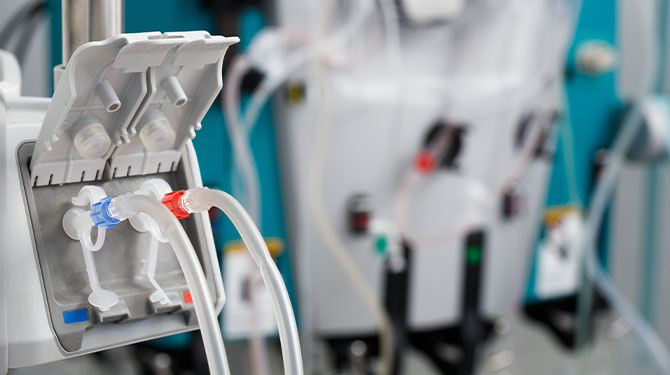
Before starting dialysis, a vascular access is needed; this is a site on your body from which your blood is removed and returned.
The process includes a consultation, an ultrasound and the placement of your access for dialysis. We are usually able to accomplish all of this in the same day, in about 4 to 5 hours.
Once your new access is placed, it takes time to mature and heal before it is usable for dialysis. We will give you more information specific to your condition and will see you several weeks after your procedure to ensure things are healing properly.
Hemodialysis is most commonly used to treat advanced and permanent kidney failure. In hemodialysis, your blood flows a few ounces at a time through a special filter that removes wastes and extra fluids. The clean blood is then returned to your body.
Catholic Health can insert and maintain your vascular access for hemodialysis. We offer:
With peritoneal dialysis (PD), a soft tube called a catheter is used to fill your abdomen with dialysis solution, a cleansing liquid. Waste products and extra fluid pass from your blood into the dialysis solution that will pull wastes and extra fluid into the abdominal cavity. These wastes and fluid then leave your body when the dialysis solution is drained.
We can insert and maintain your vascular access for peritoneal dialysis. We offer:
Blood clots or blockages may interfere with your dialysis. When fistulas and grafts become clogged or narrowed, they can prevent you from undergoing dialysis.
To maintain blood flow through your vascular access, we offer:
After you start receiving dialysis through your new access, we will follow up with you to ensure that your access stays healthy and usable.
It is not unusual that an acute or urgent problem develops with your access; for example, an infection, clot, blockage, or excessive bleeding. Rest assured that we are ready to take care of these problems as well – usually on the same or next business day.
Regular preventive visits are important to maintain your access and reduce the likelihood of any urgent problems.